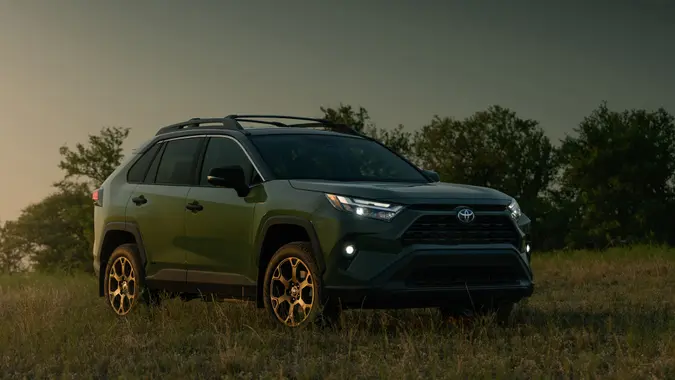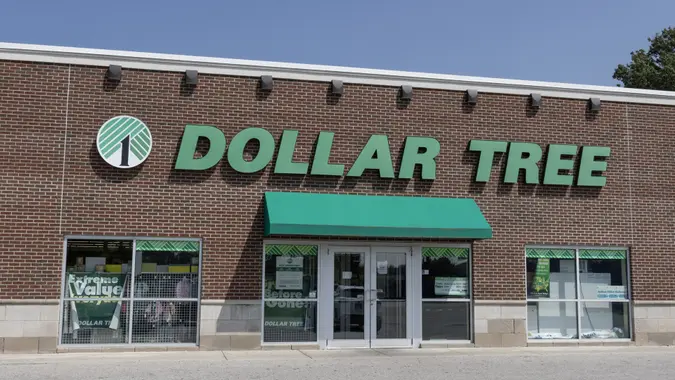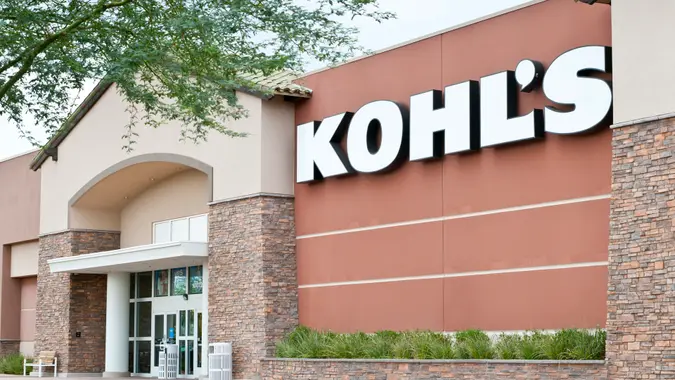You Can Save Thousands Annually by Becoming a One-Car Family

Commitment to Our Readers
GOBankingRates' editorial team is committed to bringing you unbiased reviews and information. We use data-driven methodologies to evaluate financial products and services - our reviews and ratings are not influenced by advertisers. You can read more about our editorial guidelines and our products and services review methodology.

20 Years
Helping You Live Richer

Reviewed
by Experts

Trusted by
Millions of Readers
It’s no secret that car ownership is expensive.
From fuel to maintenance and insurance, cars can cost you a ton of money long after you’ve paid them off. Despite the high costs though, the average U.S. household had 1.88 cars in 2017, up slightly from 1.86 in 2009. The most recent data shows that 91.7% of American households own at least one car and 22% have three or more vehicles.
Despite the potentially high expenses, many families have more than one car in their driveways. While there are several benefits to having multiple family vehicles — the most obvious being more transportation options and flexibility — downsizing can save you money.
Especially now with used car prices hitting an all-time high, reducing the number of cars in your driveway is doubly beneficial. You can decrease your annual car costs while selling your car for a price that was almost laughable just a few years ago.
With all that in mind, let’s look at all the costs — not just those related to gas prices — associated with car ownership. It’ll paint a clear picture of how becoming a one-car family could lead to big savings in the long run.
Vehicle Financing
Potential savings: $8,856
If you purchased one of your cars within the past few years, you might still be financing it. In fact, with rising sticker prices and higher interest rates, some people are locking themselves into loan terms as long as 84 months (also known as seven years).
According to data from the fourth quarter of 2023, the average car payment for a new vehicle was $738, an increase of 2.5% year over year.
Fuel Costs
Potential savings: $3,000
As mentioned earlier, fuel costs are often our biggest operating expense. And even as more people switch to electric vehicles, there are bound to be some fuel costs, even if the fuel source is electricity.
According to the American Automobile Association (AAA), the average American spends $3,000 annually on fuel.
Insurance
Potential savings: $1,765
Insuring a car isn’t cheap, and you’ll be expected to pay monthly premiums regardless of how much you use it. Hence, becoming a one-car family can help you save significantly on insurance.
Car insurance varies quite a bit depending on the driver’s age and where you live, but AAA found that the average insurance plan was $1,765 per year based on the driving costs breakdown for 2023.
Maintenance
Potential savings: $792
Maintenance is also expensive, especially if you have an aging gas-powered car. Aside from oil changes, wiper blades, tires and engine and oil filters cost too. It all adds up — AAA estimates annual savings of $792 on maintenance.
Parking Passes
Potential savings: $3,000
If you live in an apartment complex, you may have to pay for parking. It’s also common to pay for parking if you work downtown in a big city, and parking can be expensive.
An INRIX study found that Americans spent about $3,000 annually on parking-related expenses.
Perfect Time to Sell
The focus here has been on the cost savings of becoming a one-car family, but what about the income from selling your second car? Used car prices remain high as they have been for much of the pandemic, so selling your second family car could provide an immediate payoff.
“New cars are selling for over MSRP, and used cars are selling for near the same price as new cars,” says Jay Zigmont, CFP and founder of Childfree Wealth. “Selling a car now can not only get you out of a loan (or lease) but may actually put cash in your pocket,” Zigmont says.
Thus, it’s worth checking Kelley Blue Book, especially if it is relatively new and has low mileage. Either way, it’s a good idea to check as you may find that the payoff far outweighs the potential downside of having one less vehicle.
Downsides of Downsizing
As for the potential downsides to becoming a one-car family, it’s only reasonable to consider the cons before you go from eight wheels to four.
The most obvious drawback of becoming a one-car family is having flexibility. “The downside would be that you may have to use ride-sharing apps such as Uber or Lyft if the car is in use by another member of your family,” says Sean Burke, vice president and director of institutional money management at Kirsner Wealth Management. “This has a cost which can vary depending on where you live and how far you have to travel.”
As Burke mentions, how costly it will be to use rideshare services will depend on where you live. They are inevitably more convenient and cost-effective in large urban centers than in rural areas. Urban areas also have services like Zipcar, which can be more cost-effective than owning for those who drive infrequently.
If you live in a secluded rural area, that may not be an option, so where you live is a big factor here.
 Written by
Written by  Edited by
Edited by 

























